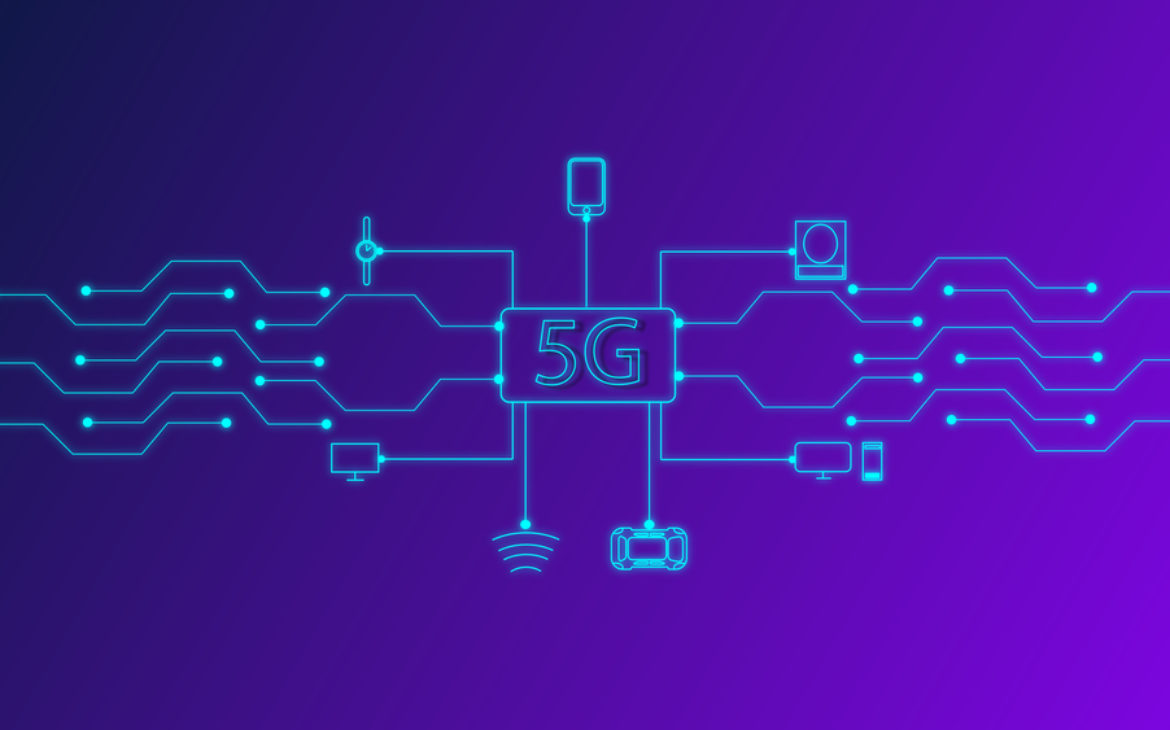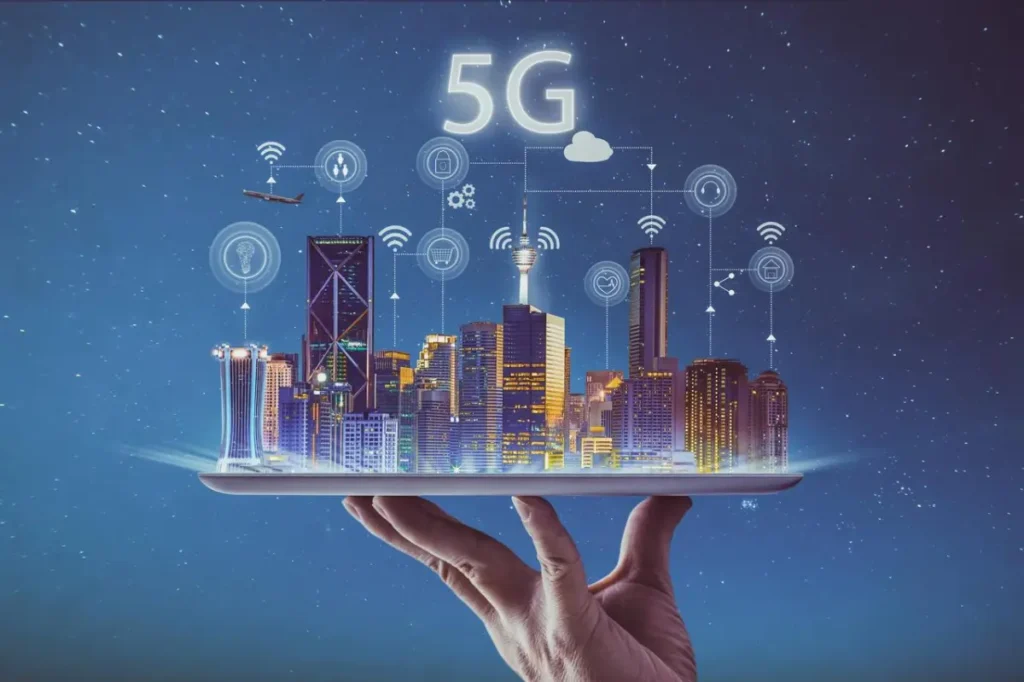The advent of 5G technology marks a monumental shift in the landscape of mobile connectivity, heralding a new era that promises to revolutionize how we communicate, work, and engage with the digital world. Building upon the strong foundation laid by 4G LTE networks, 5G offers unprecedented speeds, dramatically reduced latency, and the ability to support a vast and diverse ecosystem of connected devices simultaneously. As the backbone of future digital infrastructure, 5G is not just an incremental upgrade; it is a paradigm shift with profound implications for industries, economies, and societies worldwide.
This article delves deeply into the multifaceted impacts of 5G on mobile technology, exploring its technical innovations, extensive benefits, key challenges, and the transformative changes it brings to various sectors, from healthcare and manufacturing to entertainment and smart cities.
Key Takeaways
- Speed and Efficiency: 5G offers significantly faster data speeds and lower latency, enhancing user experiences and enabling real-time applications.
- Connectivity Expansion: The ability to connect a vast number of devices simultaneously supports the growth of IoT ecosystems and smart technologies.
- Tailored Services: Network slicing allows for customized connectivity solutions to meet the specific needs of different industries and applications.
- Economic Growth: The widespread adoption of 5G is expected to drive economic development and create millions of jobs globally.
- Ongoing Challenges: Addressing infrastructure, security, regulatory, and health concerns is crucial for the successful implementation of 5G technology.
Enhanced Speed and Bandwidth

Technical Background:
- Peak Data Rates: 5G networks leverage advanced technologies like millimeter-wave (mmWave) spectrum, massive MIMO (Multiple Input Multiple Output), and beamforming to deliver peak data speeds of up to 20 Gbps, which is roughly 100 times faster than typical 4G LTE speeds.
- Frequency Bands: Unlike 4G, which primarily uses sub-6 GHz frequencies, 5G expands into higher frequency bands (e.g., 24 GHz to 100 GHz) that provide wider channels and higher capacity, albeit with shorter range and line-of-sight requirements.
- Channel Bandwidth: 5G supports channel bandwidths up to 400 MHz in mmWave bands compared to up to 20 MHz in 4G, which directly translates to faster data transmission.
Real-World Implications:
- High-Definition Content: Ultra-high-definition (UHD) video streaming (4K, 8K) becomes seamless, even on mobile devices, without buffering or quality degradation.
- Cloud Gaming: Enables low-latency, high-quality streaming of games from the cloud without the need for powerful local hardware.
- Virtual Reality (VR) and Augmented Reality (AR): High bandwidth allows real-time rendering of immersive environments, crucial for applications in gaming, training, and remote collaboration.
- Remote Work and Learning: Large files and data-rich applications can be accessed and shared instantly, supporting the growing need for reliable remote connectivity.
Ultra-Low Latency
Technical Background:
- Latency Reduction Mechanisms:
- Edge Computing: 5G integrates edge computing nodes that process data near the user, drastically reducing the time data travels to centralized servers.
- Network Architecture: Use of software-defined networking (SDN) and network function virtualization (NFV) enables faster data routing and dynamic resource allocation.
- Enhanced Protocols: Improvements in transmission protocols and faster handover processes between cells further reduce latency.
- Typical Latency Metrics:
- 4G latency: ~60–98 ms
- 5G latency: as low as 1 ms (theoretical minimum), with real-world deployments targeting 5–10 ms.
Real-World Implications:
- Autonomous Vehicles: Millisecond-level communication between vehicles and infrastructure allows for immediate decision-making to avoid accidents.
- Remote Surgery: Surgeons can operate robotic instruments with near-instantaneous feedback, critical for delicate procedures conducted remotely.
- Industrial Automation: Factories use real-time control for robotics and machinery, improving precision and safety.
- Interactive AR/VR: Low latency is essential to prevent motion sickness and provide smooth, responsive experiences.
Massive Device Connectivity
Technical Background:
- Connection Density: 5G supports up to 1 million devices per square kilometer, a tenfold increase over 4G’s capacity (approximately 100,000 devices).
- Technology Enablers:
- Massive IoT Support: 5G introduces new categories like NB-IoT (Narrowband IoT) and LTE-M, optimized for low-power, low-data-rate devices.
- Efficient Resource Allocation: Dynamic scheduling and slicing allow prioritization and efficient coexistence of diverse device types, from low-power sensors to high-bandwidth smartphones.
- Advanced Modulation: Techniques like OFDM (Orthogonal Frequency Division Multiplexing) and QAM (Quadrature Amplitude Modulation) increase spectrum efficiency.
Real-World Implications:
Agriculture: Real-time data from soil sensors, drones, and weather stations optimize crop yields and resource use.
Smart Cities: Integration of sensors for traffic, lighting, pollution, and public safety requires vast device density.
Connected Homes: Increasing numbers of smart appliances, security systems, and entertainment devices can operate concurrently without network congestion.
Industrial IoT: Large-scale deployment of sensors and machines in manufacturing plants for monitoring and predictive maintenance.
Network Slicing for Tailored Services
Network slicing is a pivotal innovation in 5G, enabling the creation of multiple virtual networks atop a shared physical infrastructure. Each slice is tailored to meet specific requirements of diverse applications and industries. This approach ensures optimal performance, resource allocation, and service quality across various use cases.
Key Components of Mobile Network Slicing

Virtualization: The Foundation of Mobile Network Flexibility
Virtualization is the technological backbone of mobile network slicing. Traditionally, network functions such as routing, firewalls, and load balancing ran on specialized hardware devices. With virtualization, these network functions are transformed into software components that can run on standard servers supporting infrastructure.
- Network Function Virtualization (NFV): Enables the decoupling of network services from physical hardware. This means mobile network functions can be deployed, scaled, or updated swiftly without physical changes.
- Software-Defined Networking (SDN): Provides centralized control over the network. Instead of static, hardware-driven routing, SDN allows dynamic programming of how data flows through the network, ensuring optimal paths and resource use.
Together, NFV and SDN create an agile mobile network environment where virtual slices can be spun up quickly, adjusted on demand, and efficiently managed—all without costly hardware replacements or manual intervention.
Orchestration: Intelligent Lifecycle Management of Mobile Slices
Orchestration is the “brain” that manages every aspect of mobile network slices.
- A central orchestration platform oversees slice creation, configuration, monitoring, and termination. It ensures each mobile network slice gets the right amount of bandwidth, computing power, and storage based on current and predicted demand.
- For example, during a live concert streamed over networks, the orchestration system might temporarily allocate extra resources to the mobile slice handling video streaming to maintain high quality for millions of users.
- Orchestration automates fault detection and recovery, ensuring high availability. If a network slice experiences technical issues, it can be quickly isolated and fixed without impacting other slices.
This real-time management guarantees optimal network utilization and ensures consistent quality of service (QoS) across all mobile network slices.
Isolation: Security and Performance Assurance in Mobile Networks
Isolation guarantees that mobile network slices operate as separate, independent networks within the same physical mobile network infrastructure.
- Performance Isolation: Traffic spikes, faults, or failures in one slice do not affect others. For instance, heavy video streaming on one mobile slice won’t slow down emergency communication on another.
- Security Isolation: Prevents cyberattacks or data breaches from spreading across network slices. Sensitive applications—like financial services or healthcare—benefit from dedicated, secure mobile slices.
- This separation is critical for regulatory compliance and data privacy, especially in industries handling confidential or life-critical information transmitted over mobile networks.
Isolation enhances reliability, user trust, and ensures that mission-critical services remain uninterrupted.
Real-World Applications of Mobile Network Slicing
Network slicing’s ability to customize network performance for specific needs unlocks transformative possibilities across industries relying on mobile connectivity.
Healthcare on Mobile Networks
Healthcare applications demand extremely reliable and ultra-low latency mobile connections, particularly for:
- Telemedicine via Mobile: Real-time video consultations require high bandwidth and low latency for clear communication over networks.
- Remote Surgery: Robotic surgeries rely on near-instantaneous data exchange via secure slices to provide precise control and feedback, where delays can be life-threatening.
A dedicated healthcare network slice ensures uninterrupted, secure transmission of sensitive patient data and medical commands over the mobile network, isolated from less critical traffic.
Manufacturing Enhanced by Mobile Network Slicing
The rise of Industry 4.0 depends on fast, reliable mobile communication between machines and sensors.
- Industrial IoT (IIoT) over Networks: Sensors monitor equipment health and production lines, sending real-time data to control centers for predictive maintenance and automated adjustments using dedicated mobile slices.
- Robotics and Automation: Network slices tailored for low latency and high reliability ensure robotic arms and automated guided vehicles operate smoothly and safely within a network environment.
With mobile network slicing, manufacturing plants can run complex automation processes with guaranteed performance, isolated from consumer traffic.
Public Safety Empowered by Mobile Network Slicing
During emergencies or natural disasters, mobile communication networks can become congested or fail, risking lives.
- Priority Mobile Slices for Emergency Services: Police, fire, and medical responders get dedicated, high-priority slices that guarantee uninterrupted mobile connectivity, even when general mobile network demand soars.
- These mobile slices enable secure, real-time communication, video feeds from drones, and coordination across agencies using mobile devices.
Network slicing thus enhances the effectiveness of first responders using networks and saves lives.
Benefits of Mobile Network Slicing for Mobile Users and Operators
- Personalized Mobile Experiences: Mobile users receive optimized mobile network performance tailored to their activities—whether gaming on a mobile device, video calling via networks, or using IoT devices connected to mobile.
- Efficient Mobile Resource Use: operators maximize their infrastructure investment by dynamically allocating resources only where needed within the mobile network.
- Enhanced Security: Sensitive data travels in isolated network slices, minimizing risk.
- Scalability and Agility for Mobile Services: New mobile services can be launched rapidly without building new physical mobile networks.
Empowering Emerging Technologies
5G’s capabilities serve as a catalyst for the advancement and deployment of several emerging technologies:
Augmented and Virtual Reality (AR/VR)
The high bandwidth and low latency of 5G networks are essential for delivering immersive AR/VR experiences. Applications span across:
- Education: Virtual classrooms and interactive learning environments.
- Healthcare: Remote surgeries and medical training simulations.
- Entertainment: Real-time interactive gaming and live event experiences.
Artificial Intelligence (AI)
5G networks facilitate real-time data transmission, enabling AI applications such as:
- Predictive Analytics: Anticipating trends and behaviors for proactive decision-making.
- Autonomous Systems: Powering self-driving vehicles and drones with real-time processing.
- Edge AI: Processing data locally on devices to reduce latency and bandwidth usage.
Edge Computing
By processing data closer to the source, edge computing reduces latency and bandwidth usage, enhancing the efficiency of cloud services and applications. This is particularly beneficial for:
- Smart Cities: Real-time traffic management and public safety monitoring.
- Industrial Automation: Monitoring and controlling manufacturing processes with minimal delay.
- Retail: Personalized shopping experiences through real-time data analysis.
Economic and Industrial Impact

The global deployment of 5G is poised to drive significant economic growth. According to PwC India, by 2035, 5G technology could:
- Generate up to USD 13.2 trillion in global economic output.
- Create over 22 million jobs worldwide.
Industry-Specific Benefits
- Healthcare: Enhanced patient care through telemedicine and remote monitoring.
- Manufacturing: Increased productivity via automation and real-time analytics.
- Logistics: Improved supply chain efficiency with real-time tracking and autonomous delivery systems.
- Agriculture: Precision farming techniques leading to optimized resource usage and higher yields.
Challenges and Considerations
Despite its promising benefits, the rollout of 5G faces several challenges:
Infrastructure Development
The implementation of 5G requires substantial investment in new infrastructure, including the installation of small cells and fiber-optic networks. This necessitates:
- Urban Planning: Integrating new infrastructure into existing city layouts.
- Regulatory Approvals: Navigating local regulations and obtaining necessary permits.
- Cost Management: Balancing the high costs of deployment with expected returns on investment.
Security Concerns
The increased number of connected devices and the complexity of 5G networks raise potential security risks, necessitating robust cybersecurity measures. Key considerations include:
- Data Privacy: Ensuring user data is protected from unauthorized access.
- Network Integrity: Safeguarding against cyberattacks that could disrupt services.
- Device Authentication: Verifying the legitimacy of connected devices to prevent malicious activities.
Regulatory Issues
| Challenge | Description | Importance | Examples/Implications |
|---|---|---|---|
| Spectrum Allocation | The process of distributing radio frequency bands to different operators and services to avoid interference. | Ensures that 5G networks operate without cross-signal disruption, maximizing efficiency and coverage. | Governments must allocate high-frequency bands (e.g., mmWave) efficiently to support 5G speed and capacity while avoiding interference with other wireless services. |
| International Standards | Creating and adopting common technical standards for 5G technology across countries. | Enables global device compatibility and seamless roaming, reducing costs and fostering innovation. | Organizations like 3GPP develop standards; lack of harmonization may lead to fragmented markets and incompatibility issues. |
| Policy Development | Formulating regulations that balance fostering technological innovation with protecting public interests like privacy and security. | Encourages investment in 5G infrastructure while ensuring consumer safety, data protection, and fair competition. | Policies address data privacy laws, cybersecurity mandates, net neutrality, and equitable access to 5G services. |
Health and Environmental Impact
While studies have not conclusively shown adverse health effects, public concerns about the potential impact of 5G’s electromagnetic fields persist. Ongoing research and transparent communication are essential to address these concerns responsibly.
Visual Aids
To further illustrate these concepts, consider the following diagrams:
- Network Slicing Architecture: Depicts the layered structure of network slicing, highlighting the service, network function, and infrastructure layers.
- 5G Use Case Scenarios: Visual representations of 5G applications in healthcare, manufacturing, and public safety.
- Economic Impact Infographics: Graphs showcasing the projected economic benefits of 5G deployment.
Also Read : What Are the Latest Innovations in Robotics Technology?
Conclusion
5G technology represents a transformative leap in Mobile Technology, redefining the way individuals, businesses, and entire industries interact with digital systems. As the latest and most advanced generation of wireless communication, 5G is not just an upgrade—it is a fundamental shift that elevates Mobile Technology from a tool of convenience to a driver of innovation, connectivity, and societal change.
The impact of 5G on Mobile Technology is vast and far-reaching. It significantly improves data transmission speeds, drastically reduces latency, and exponentially increases the number of devices that can connect to the internet simultaneously. These enhancements position Mobile Technology as a critical enabler of futuristic innovations such as autonomous vehicles, real-time augmented reality, remote surgery, smart cities, and the Internet of Things (IoT). In doing so, 5G not only supports new functionalities but also reshapes user expectations from Mobile Technology across all age groups and demographics.
In the corporate and industrial landscape, Mobile Technology underpinned by 5G is set to revolutionize operations. From logistics and manufacturing to finance and agriculture, businesses are increasingly relying on robust mobile networks to drive automation, monitor performance in real time, and deliver enhanced services to customers. The economic implications are profound, with 5G-powered Mobile Technology projected to generate trillions in GDP growth and support millions of new jobs globally.
FAQs
1. What is 5G?
5G is the fifth generation of mobile network technology, offering faster speeds, lower latency, and the ability to connect more devices simultaneously compared to previous generations.
2. How does 5G differ from 4G?
5G provides significantly higher data speeds, reduced latency, and greater capacity for device connectivity, enabling more advanced applications and services.
3. What are the benefits of 5G for consumers?
Consumers can expect faster download and upload speeds, improved streaming quality, enhanced gaming experiences, and the ability to connect more devices seamlessly.
4. How will 5G impact businesses?
Businesses can leverage 5G for real-time data analytics, automation, and enhanced communication, leading to increased efficiency and innovation.
5. Is 5G available everywhere?
5G coverage is expanding globally, but availability varies by region. Urban areas are typically the first to receive 5G services.
6. Are there health risks associated with 5G?
Current research does not conclusively link 5G exposure to adverse health effects. Ongoing studies continue to monitor potential impacts.
7. How can I access 5G services?
To access 5G services, consumers need a compatible device and a subscription plan from a mobile network provider that offers 5G coverage.

